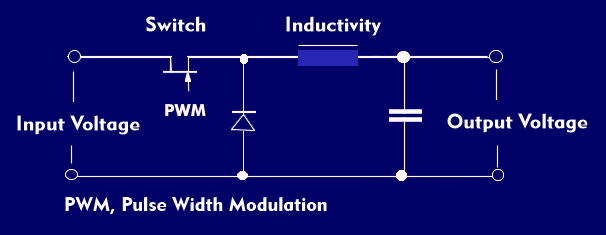step-down converter
A step-down converter or buck converter is a step-down converter or buck converter. It is a DC-DC converter whose output voltage is always lower than the input voltage. Typical step-down converters are the Intermediate Bus Converters( IBC) used in the Intermediate Bus Architecture( IBA). The output voltage of step-down converters is controlled by keying a transistor. The duty cycle of on to off transistor determines the ratio of input to output voltage.
Conceptually, a step-down converter consists of an electronic switch, realized by a transistor, and a magnetic resistor, realized by the combination of a diode and an inductor. The switching states and thus the on and off times of the transistor are pulse width modulated. When the transistor is on, the current limited by the inductor increases linearly for the duration of the on-time, while the voltage across the inductor drops. The load current flows through the inductor while the diode operates in the reverse direction. During the turn-off time, the voltage in the inductor reverses and the current flows across the diode. The output voltage is proportional to the duty cycle of the input voltage.
The low-pass filter of inductance and capacitance located before the load resistor provides linear rise and fall of the triangular output voltage, which is load-independent.
In addition to the pure step-down converter, buck converter, there is also the combined buck-boost converter, which is a combination of step-down and boost converter.

